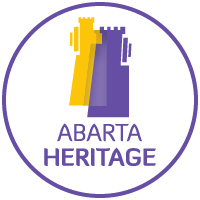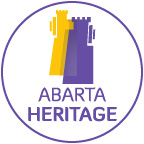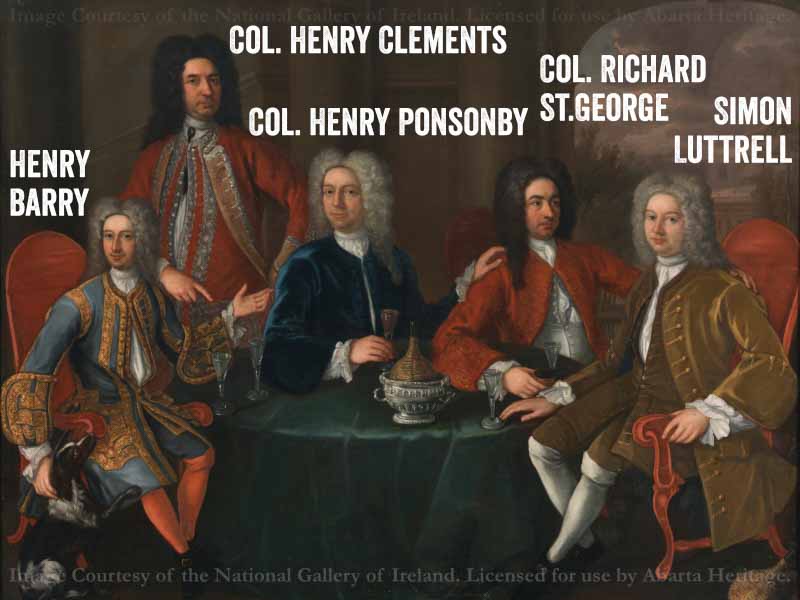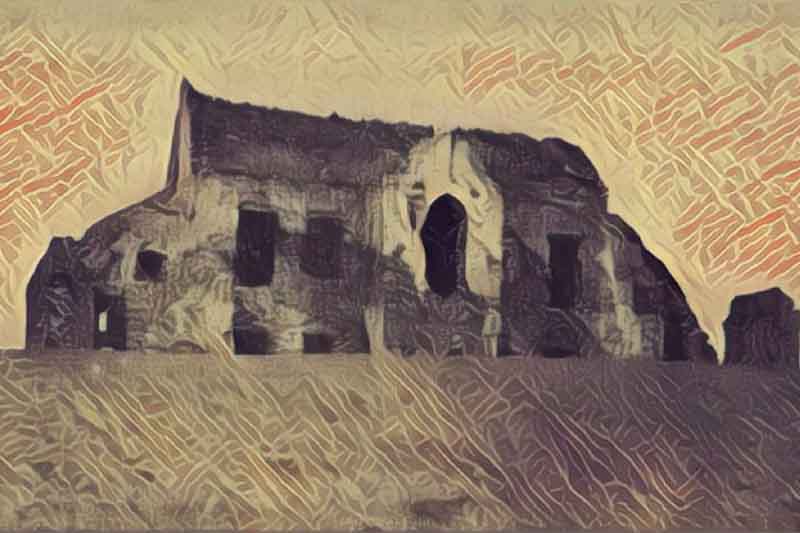Dublin’s Hellfire Club “a brace of monsters, blasphemers & bacchanalians”. Jonathan Swift
The Hellfire Club have long loomed large in the imagination, but who exactly were they? What did they believe and what were their aims?
Despite its infamy, the organisation known as the Hellfire Club was relatively short-lived in Ireland. The group was founded in Ireland in c.1737 and effectively disbanded by the early 1740s. However, the organisation still looms large in the public consciousness. If you ask people what they know of the Hellfire Club, many may describe a masonic-like group of rich aristocrats who enjoyed drunken orgies where they gambled and practiced dark arts like murder and human sacrifice. But how much of this is fanciful imagination, and how much has a basis in fact? Did such a group exist? If so, who were the members? What did the group believe or do? Did they practice devil worship and human sacrifice? Did the Hellfire Club ever actually meet at the hunting lodge on Montpelier Hill that still bears their name?
(A list of sources for this article are detailed at the bottom, the references appear numbered as (1), (2) etc).
‘When rakish gentlemen wished for congenial society they rode up to Mr. Conolly’s hunting-lodge, perched like Noah’s Ark on the top of Mount Pellier, among the Dublin Mountains. Here they were reported to drink heavily, indulging in blasphemous oaths, and amusing themselves with preposterous orgies. This may have been, as it is said, a haunt of the notorious Hell-Fire Club, but most of the club’s meetings were actually held in the Eagle Tavern, in Dublin.’
(1)
Who were the Hellfire Club?
The Hellfire Club was an organisation very much of its time, a period when Enlightenment Philosophy caused many to question the strictures and restraints of society. An engaging example of the mindset of the period comes from the accounts of Thomas ‘Buck’ Whaley who was born nearly thirty or so years after the Hellfire Club prowled the streets of Dublin. Born into a wealthy Dublin family in 1768, he described himself in a manner that would probably have made him a good candidate for membership to the Club:
‘I was born with strong passions, a lively imaginative disposition and a spirit that could brook no restraint. I possessed a restlessness and activity of mind that directed meto the most extravagant pursuits; and the ardour of my disposition never abated until satiety had weakened the power of my enjoyment.’
Thomas ‘Buck’ Whaley (2)
Click the picture to discover more about the Dublin Hellfire Club Members
The First Hellfire Club
The original Hellfire Club appears to have been created by the Philip, 1st Duke of Wharton in England in 1719. Philip was a controversial character, prone to excessive drinking and outrageously lewd behaviour. [In a somewhat serendipitous coincidence, it was this same Philip Wharton who sold Montpelier Hill, and the estates of Rathfarnham, to William Conolly]. This first Hellfire Club in England was suppressed by order of King George Ist in 1721 (3).
The establishment of the first Hellfire Club is often erroneously ascribed to Sir Francis Dashwood. This famous rake was a founder member of the Dilettanti Society. A ‘cultural interest’ organisation with a distinct overlap of membership and morals with the Hellfire Club. The society was described by Horace Walpole as: “a club for which the nominal qualification is having been to Italy, and the real one, being drunk; the two chiefs are Lord Middlesex and Sir Francis Dashwood, who were seldom sober the whole time they were in Italy” (4). Dashwood was too young to join the Duke of Wharton’s first incarnation of the Hellfire Club, but he was reportedly a member of another Hellfire Club in the 1730s. Dashwood later became the founder of his own Hellfire Club that quickly gained notoriety in around 1755. They were nicknamed the ‘Monks of Medmenham Abbey’ as they met in an old Cistercian monastery on the banks of the Thames. By all accounts Dashwood’s version of the Hellfire Club matched its forebears for orgies of debauchery and drunkenness, and they are said to have performed profane versions of Franciscan rites and ceremonies (5).
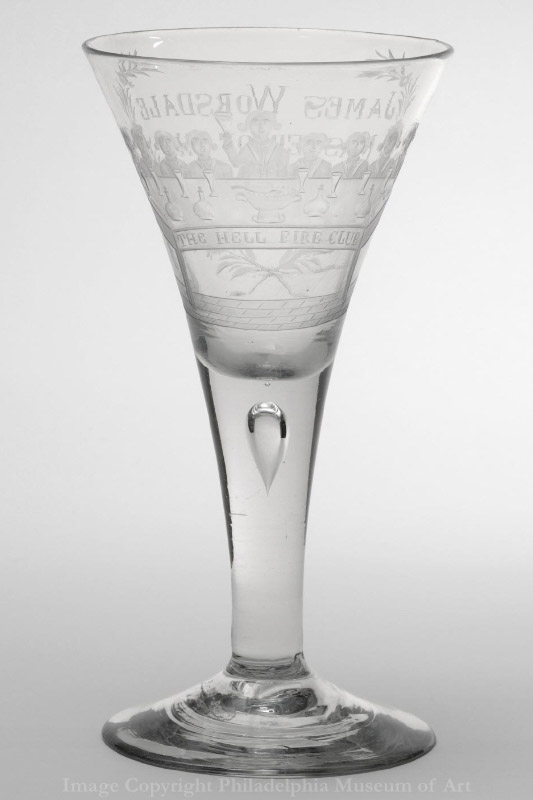
The Structure of the Hellfire Club
The English and Irish Hellfire Clubs did not appear to be particularly rigid formal structures. They would perhaps be more accurately be described as a ‘shared special interest group’, designed purely for hedonistic and self-indulgent pleasure with a view to amusing themselves and shocking society. However there did appear to be at least ceremonial ‘roles’. For example, James Worsdale served as the ‘Master of the Revels’ of the Dublin Hellfire Club.
The Irish Hellfire Club quickly gained notoriety by their open mockery of the church, that took the Enlightenment’s questioning of organised religion to a new level. An interesting letter from 1738, that purported to be written by a member of the club who used the pseudonym ‘Molock’, describes the Hellfire Club and its practices, including ‘the sacrifice of maidens’ (presumably an allusion to taking their virginity rather than actual human sacrifice, though that has been taken as a literal remark by later commentaries) and that new members had to make the following declaration:
“PLUTO I am thine…I,by thy efficacious mighty self, do swear all that is called good by priest-rid fools entirely to abandon,
and to let nothing share the least part of my favour but what is solely urged by most vicious and libidinous desires”
(6)
The Hellfire Club – Scandals and Outrage.
The Hellfire Club soon became notorious for its excesses, which were often conducted in public. Its heavy drinking sessions were sometimes attended by sexual assault and violence, ending in murder on at least one recorded occasion (7, 8). The group’s wild excesses and blasphemous acts came to the attention of Jonathan Swift, who railed against the notorious Hellfire Club, describing them as a:
‘brace of monsters, blasphemers and bacchanalians, of whom Worsdale was the leader’. (9)
The Irish Hellfire Club was alleged to have indulged in Satanic rituals and to have made pacts with the Devil. According to numerous accounts, the members of the Hellfire Club met to drink ‘scaltheen’ (hot whiskey and melted butter) from a silver punchbowl. They are also said to have always left one chair at the head of the table vacant for the Devil (10).
Did the Hellfire Club meet on Montpelier Hill?
The principal meeting place for the Hellfire Club is said to have been the Eagle Tavern that once stood on Cork Hill in Dublin. This particular tavern and its proprietor, Mr Lee, must have been both of high quality and discreet, asit also served as the rendezvous for several other elite organisations, such as the Aughrim and Hanover Clubs, and the Freemasons (11).
A night out along Cork Hill in the 1730’s must have been lively and somewhat dangerous, as a number of competing groups such as the Hellfire Club and the Blasters haunted the area. They were no doubt attracted by the quantity of social establishments. A survey of Dublin’s 18th century Shop Signs lists no fewer than six taverns in close proximity including the Hellfire Club’s favourite meeting place, the Eagle Tavern. Others included the Cock and Punch Bowl; the Globe; the Hoop; Jacob’s Ladder; and the Three Cranes. There was also a number of Coffee Houses that were also frequented by the eighteenth century dissolute dilettantes, especially Lucas’s Coffee House (that is mentioned in accounts as being directly opposite the Eagle Tavern), Solyman’s Coffee House and St. Lawrence’s Coffee House (12).
There is some doubt as to whether the Irish Hellfire Club regularly met in the Hunting Lodge on Montpelier Hill. William Domville-Handcock wrote in 1899:
“The tradition that the Hell Fire Club held some of their meetings here may have been founded on fact. That mysterious and iniquitous assembly existed about the time this house was built; and a member of the Club then lived not far off.” (13)
Weston St. John Joyce was more confident in stating that it was unlikely to have been a regular meeting place when he wrote in 1912:
‘With regard to one of the names which seems to have taken the fancy of the public, it is to be observed that while the Hell Fire Club may have held some of its meetings in this house, it is tolerably certain that it was never one of the regular meeting-places of that mysterious and iniquitous body, the ordinary rendezvous of which was the Eagle Tavern on Cork Hill’. (14).
However an anecdote from 1739 may allude to events that took place on Montpelier Hill, although a definite location was not provided so it remains uncertain:
‘a whole Hell-Fire Club was actually put to flight, and chased out of the house, by a goose dropped down a chimney that was on fire, within at most twenty miles of Dublin.’ (15).
As yet, we have not been able to find a clear demonstrable link between the Hellfire Club (or its principal members) and the Conolly family that may indicate a formal leasing of the Hunting Lodge or lands at Montpelier Hill. However, such a link may yet exist. There could be a rental agreement or similar, still to be discovered either in the Castletown Papers (Conolly Archive) (housed in the Irish Architectural Archive), or in the archives relating to the 1st Earl of Rosse (housed in Birr Castle). Or perhaps in documents of one of the other members. The Conolly Archive is likely to have the highest potential for discovering such a link. At the time of writing, a proportion of the Conolly archive was undergoing conservation works and therefore was not available for consultation. It is certainly worthwhile following this thread in the future when the full archive becomes available.
Whether the Hellfire Club regularly met for revels on Montpelier Hill or not, and no doubt helped by its brooding and atmospheric appearance, the Hunting Lodge and the hill itself soon became imbued with folklore and tales of debauchery, sacrifice, hauntings, apparitions and dark infamous deeds. Discover the legends here.
Recommended Reading on the Hellfire Club
If you wish to learn more about the Dublin Hellfire Club members, and 18th century Ireland here are some recommended books:
Geoffrey Ashe, 2000. The Hell-Fire Clubs: A History of Anti-Morality. Gloucestershire: Sutton Publishing.
James Kelly & Martin Powell (eds). 2010. Clubs and Societies in Eighteenth-Century Ireland (Four Courts Press)
Evelyn Lord, 2008. The Hell-Fire Clubs. Sex, Satanism and Secret Societies (Yale University Press)
David Ryan, 2012. Blasphemers and Blackguards. The Irish Hellfire Clubs. (Irish Academic Press)
Thomas Whaley, 1980 (reprint) Buck Whaley’s Memoirs (The History Press) – (Although Buck Whaley was a generation or so later than the original Dublin Hellfire Club, his attitudes and riotous escapades provide a good (and fun) sense of the prevalent world view and activities of the more dissolute young men of the period, his father, Richard ‘Burn Church’ Whaley was also linked with the club).
Sources
The following sources were consulted:
- Maxwell, C. 1956. Dublin Under the Georges: 1714–1830. London: Faber and Faber
- Whaley, T. 2006. Buck Whaley’s Memoirs. Dublin: Nonsuch Publishing.
- Jones, L.C. 1942. The Clubs of the Georgian Rakes. New York: Columbia University Press.
- Pollard, Albert Frederick 1901. “Dashwood, Francis”. In Lee, S. (ed) Dictionary of National Biography, 1901 Supplement. London: Smith, Elder & Co. pp. 112–115.
- Ashe, Geoffrey 2000. The Hell-Fire Clubs: A History of Anti-Morality. Gloucestershire: Sutton Publishing
- Milne, N. 2014. Libertines and Harlots. Bath: Parragon Publishing
- Ryan, D. 2010. ‘The Dublin Hellfire Club’. In: Kelly, J., and Powell, M.J. (eds). Clubs and Societies in Eighteenth-Century Ireland. Dublin: Four Courts Press.
- Garnham, N. 1999. ‘The Trials of James Cotter and Henry, Baron Barry of Santry: Two Case Studies in the Administration of Criminal Justice in Early Eighteenth-Century Ireland’. in Irish Historical Studies. Vol. 31. No.123. pp.328–342. Cambridge University Press.
- Elias, A.C. (ed) 1997. The Memoirs of Laetitia Pilkington. Georgia: University of Georgia Press.
- Lord, E. 2008. The Hell-Fire Clubs. Sex, Satanism and Secret Societies. New Haven: Yale University Press.
- Ryan, D. 2010. ‘The Dublin Hellfire Club’. In: Kelly, J., and Powell, M.J. (eds). Clubs and Societies in Eighteenth-Century Ireland. Dublin: Four Courts Press.
- Berry, H.F. 1910. House and Shop Signs in Dublin in the Seventeenth and Eighteenth Centuries. in The Journal of the Royal Society of Antiquaries of Ireland, Fifth Series, Vol. 40, No. 2. pp.81-98. Journal of the Royal Society of Antiquaries of Ireland.
- Domville Handcock, W., 1899. The History and Antiquities of Tallaght in the County of Dublin. Dublin: Hodges Figgis
- St. John Joyce, W. 1912. The Neighbourhood of Dublin. Dublin: M.H. Gill & Son
- Ryan, D. 2010. ‘The Dublin Hellfire Club’. In: Kelly, J., and Powell, M.J. (eds). Clubs and Societies in Eighteenth-Century Ireland. Dublin: Four Courts Press
